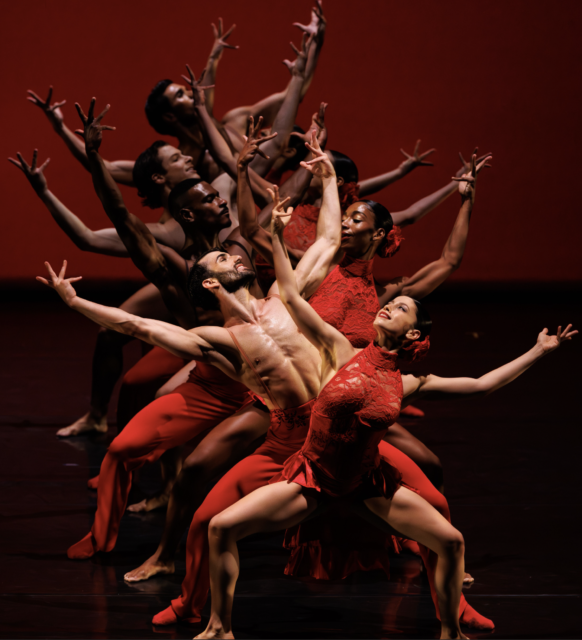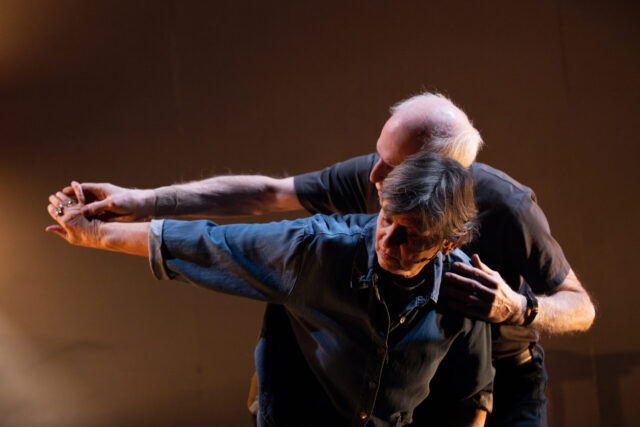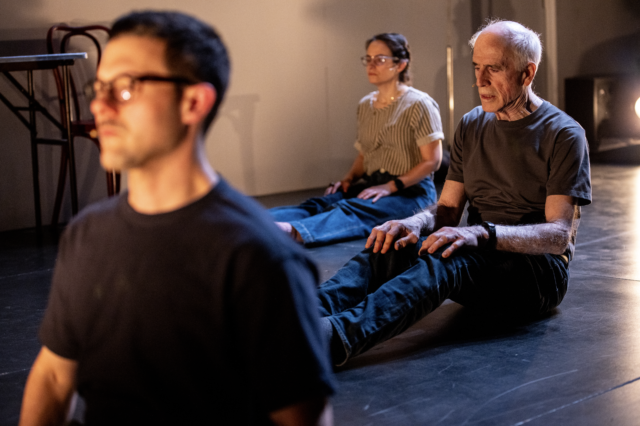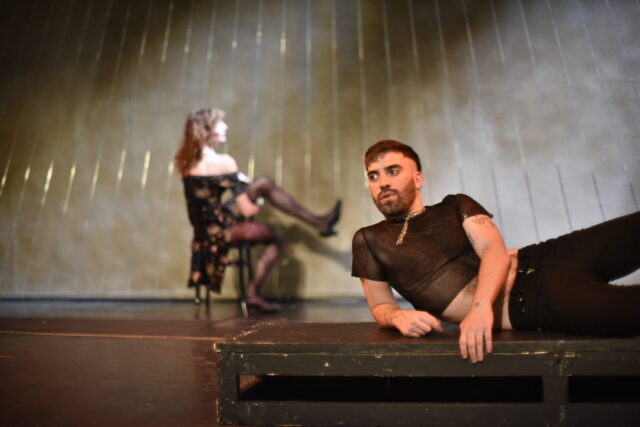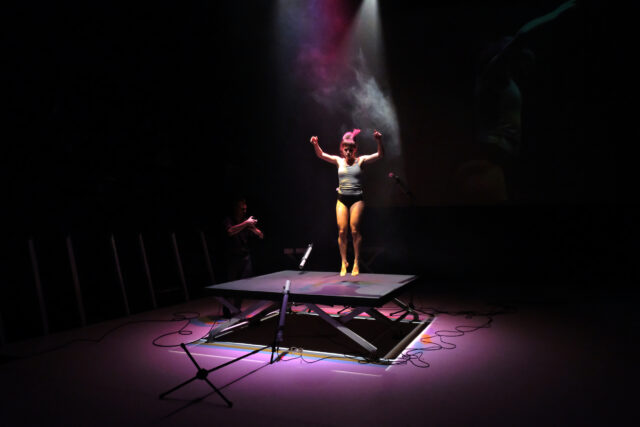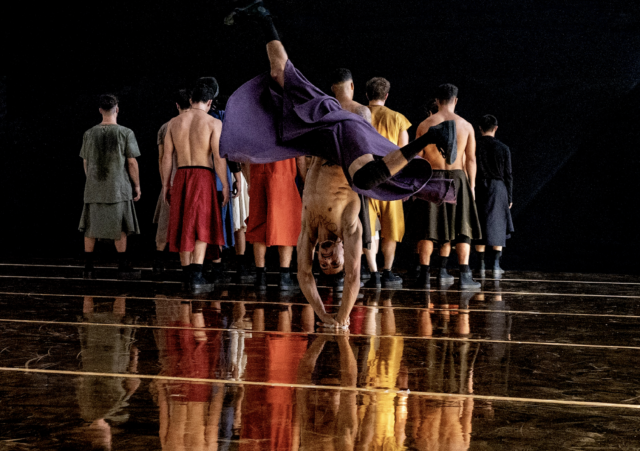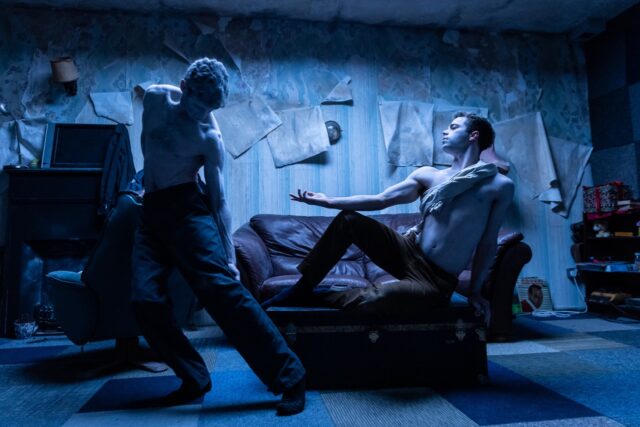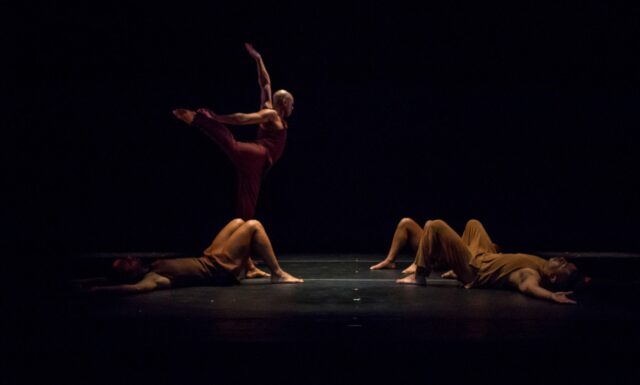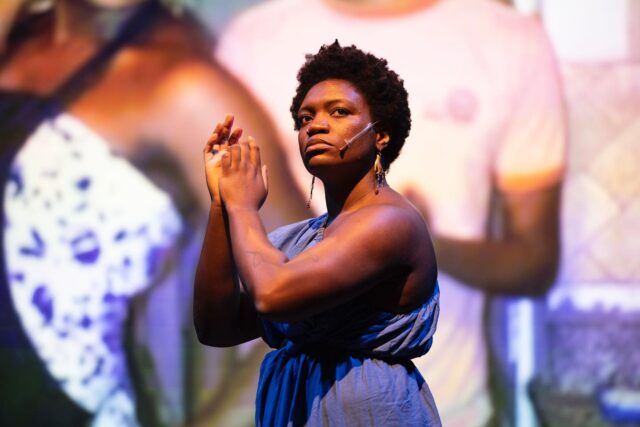
Ogemdi Ude’s Hear is part of Pioneers Go East Collective’s Out-FRONT! Festival (photo by Maria Baranova)
Out-FRONT! FESTIVAL
LGBT Community Center, 208 West Thirteenth St.
Abrons Arts Center, 466 Grand St.
January 10–20, free – $28.52 (suggested donation)
pioneersgoeast.org
Pioneers Go East Collective, which is dedicated to “radical queer performance, dance, and film for social change,” is presenting the 2024 Out-FRONT! Festival, taking place January 10-15 at the LGBT Community Center and January 17-20 at Abrons Arts Center. The bill features live performances by Arthur Aviles and Collaborators, Joey Kipp with Pioneers, Christopher Unpezverde Núñez, Jason Anthony Rodriguez, Paz Tanjuaquio, Ogemdi Ude, and Annie MingHao Wang; workshops with Rodriguez and Magda Kaczmarska; and a film program.
“This year’s festival brings together ten extraordinary multigenerational artists whose socially engaged practices explore issues of race, gender, disability, grief, migration, and our collective humanity in ways that continue to inspire us,” Pioneers artistic director Gian Marco Riccardo Lo Forte said in a statement. “We created Out-FRONT! to both celebrate artists with community-driven approaches to art-making and to offer them a platform to share their work with audiences during the Association of Performing Arts Professionals conference, an opportunity we hope provides new connections and sparks a positive dialogue about creative participation in shared spaces.”
Rodriguez, who played Lemar Wintour on Pose, will stage Take a Good Look with Dominican dancer and actor Gaymer and the solo Meet Me in the Moon. Aviles’s Naked Vanguard series continues with reimaginations of earlier works (Morning Dance, In the End, Let’s Begin, and A Jamaican BattyBwoy in America) in addition to the world premiere of Untitled #5A After Ted Shawn AKA Dansé Mexicaine & Jamaïquaine Américaine, performed by Nikolai McKenzie Ben Rema, Hunter Sturgis, and Aviles. The film screenings consist of a new short by Fana Fraser, And I was recognized by Omega X, Danni Venne, Matt Harvey, and Laura Marie Marciano, and The Personal Things by Tourmaline.
Below is the full schedule; admission to all events is free with RSVP (suggested donation $25).
Wednesday, January 10
Jason Anthony Rodriguez, Take a Good Look / Meet Me in the Moon, LGBT Community Center, Theatre 301, 8:00
Thursday, January 11
Jason Anthony Rodriguez, Take a Good Look / Meet Me in the Moon, LGBT Community Center, Theatre 301, 7:00
Joey Kipp with Pioneers Go East Collective, Tracing Lorraine, LGBT Community Center, Theatre 301, 8:00
Friday, January 12
Voguing for Teens, NEXT! TEEN Workshop with Jason Anthony Rodriguez, LGBT Community Center, Theatre 301, 3:00
Joey Kipp with Pioneers Go East Collective, Tracing Lorraine, LGBT Community Center, Theatre 301, 8:00
Saturday, January 13
Films by Fana Fraser, Omega X & Danni, Matt Harvey, Laura Marie Marciano, and Tourmaline, LGBT Community Center, Gallery 101, 5:00
Ogemdi Ude, Hear, LGBT Community Center, Theatre 301, 7:00
Sunday, January 14
NEXT! Workshop for older adults with Magda Kaczmarska, dance and storytelling, LGBT Community Center, 5:00
Ogemdi Ude, Hear, LGBT Community Center, Theatre 301, 6:00
Christopher Unpezverde Núñez, YO OBSOLETE, LGBT Community Center, Theatre 301, 7:00
Monday, January 15
Christopher Unpezverde Núñez, YO OBSOLETE, LGBT Community Center, Theatre 301, 8:00
Wednesday, January 17
Arthur Aviles and Collaborators, Naked Vanguard, Abrons Arts Center Playhouse, 8:00
Thursday, January 18
Annie MingHao Wang, had my mouth, Abrons Arts Center Playhouse, 8:00
Friday, January 19
Paz Tanjuaquio / TOPAZ ARTS Dance Productions, Silweta, Abrons Arts Center Playhouse, 7:00
Arthur Aviles and Collaborators, Naked Vanguard, Abrons Arts Center Playhouse, 8:00
Saturday, January 20
Annie MingHao Wang, had my mouth, Abrons Arts Center Playhouse, 5:00
Paz Tanjuaquio / TOPAZ ARTS Dance Productions, Silweta, Abrons Arts Center Playhouse, 6:00
[Mark Rifkin is a Brooklyn-born, Manhattan-based writer and editor; you can follow him on Substack here.]
